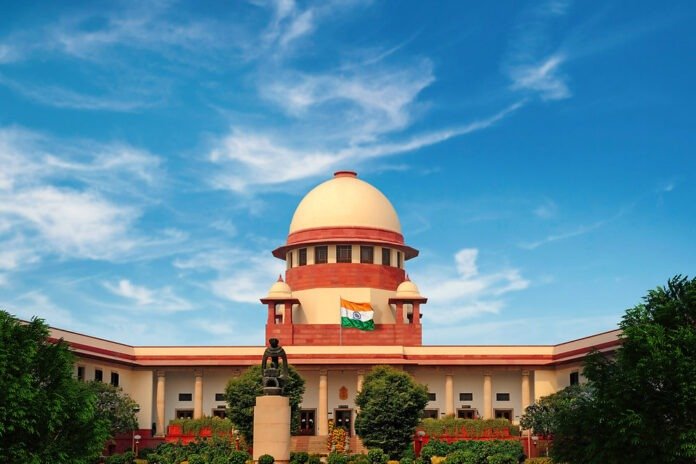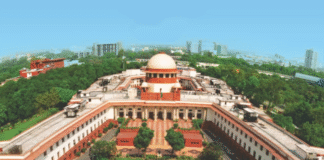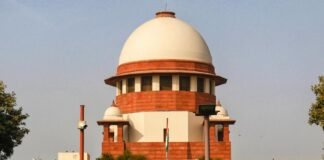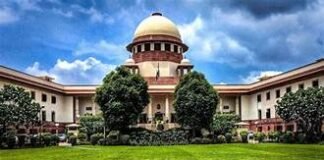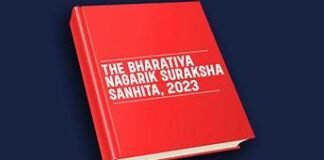Supreme Court to deliver verdict on whether judicial officers with 7 years’ Bar experience can be directly appointed as District Judges.
After a landmark hearing, the Supreme Court is set to decide whether judicial officers with prior Bar experience can be elevated directly to the position of District Judge — a ruling that could reshape judicial recruitment.
The Supreme Court tomorrow (October 9) will pronounce its judgment on a key constitutional question: can a judicial officer who has earlier practised at the Bar for seven years be directly appointed as a District Judge, filling the vacancy earmarked for Bar candidates?
A Constitution Bench of five judges — Chief Justice of India B. R. Gavai, and Justices M. M. Sundresh, Aravind Kumar, S. C. Sharma, and K. Vinod Chandran — had reserved the judgment on September 25 after a three‑day hearing. The issue has stirred significant debate across judicial recruitment circles, and tomorrow’s ruling is expected to carry wide implications for both judicial officers and litigators eyeing elevation to the higher judiciary.
Background of the Dispute
The Competing Provisions
Under existing statutes and rules in many states, a certain portion of District Judge appointments is reserved for “Bar candidates” — lawyers who have practised in courts for a stipulated duration (often 7 or more years). Another channel is “promotion from judicial service,” wherein incumbent judicial officers (civil judges, magistrates, etc.) are promoted based on seniority or merit.
The controversy arises because some judicial officers had first practised as advocates (for the mandatory years) before entering the judicial service. They now seek that those years count for Bar‑quota eligibility, allowing them to compete for Bar vacancies rather than waiting for promotion. Opponents argue that the two tracks (Bar and service) are distinct and cannot be merged retroactively.
Legal Arguments Presented
- Petitioners’ stand: Judicial officers who earlier practised at the Bar should not be penalised for opting for the judicial service. Their Bar tenure should count for eligibility, enabling them to apply under the Bar quota. They argue this aligns with the principles of equality and fairness.
- Respondent / State’s stand: The Bar quota is meant exclusively for lawyers, and those who transition into service must be confined to the service promotion route. Allowing dual eligibility would undermine the rationale for separate quotas and potentially disrupt recruitment norms.
During arguments, the Bench probed whether the two routes, once entered, can be merged or whether that would blur the distinction intended by the drafters of the rules. It also examined precedents and constitutional principles of equality, fair opportunity, and reasonable classification.
What Tomorrow’s Judgment Could Mean
- Impact on Judicial Officers
If the court rules in favor of petitioners, officers who earlier practiced would gain a broader path to elevation. Some who awaited promotion might suddenly become eligible under the Bar track, possibly altering the competitive landscape. - Recruitment Reforms
States may need to revisit their recruitment rules and statutory schemes. Some could amend rules to expressly permit or disallow such dual eligibility. Clear guidelines may be necessitated to avoid future litigation. - Litigators’ Incentives and Bar Value
A judgment favoring inclusion might shift more aspiring judges toward the Bar path, since Bar practice would then retain weight even after joining service. - Precedential and Structural Implications
The ruling could affect future cases where eligibility, classification, or dual‑route systems exist. It underscores the fine line courts must draw between reasonable differentiation and unfair exclusion.
Considerations Grounded in Journalistic Principles
In keeping with The Elements of Journalism, this decision must be reported with accuracy, balance, and transparency. Any biases—whether pro–judicial officers or pro–preservation of Bar quotas—should be clearly signposted or avoided. (Kovach & Rosenstiel argue that journalism must serve the public by providing verified information, not taking sides.)
From Writing for Journalists, the structure here presents a clear lead, background context, legal analysis, and prospective impact — all in clear, accessible Indian English — to engage a broad readership. Hicks emphasizes concise and coherent exposition, which I have aimed to maintain.
Finally, reflecting The News: A User’s Manual, readers must be equipped not only with what the decision is, but how to approach it critically. The article avoids sensationalism and invites readers to think about the systemic consequences — beyond merely who “wins.” De Botton warns of headlines that trigger emotion more than reflection.
What to Watch Tomorrow
- Whether the court allows the dual counting of Bar practice for judicial officers.
- Whether the decision is a full‑bench majority or contains dissenting notes.
- Whether the court prescribes guidelines for states to craft uniform eligibility rules.
- Reaction from Bar associations, judicial service associations, and state governments.
Stay tuned as we will promptly publish our full analysis and fact‑checked summary post‑judgment on The Legal Observer (see also our news and legal helpline sections).

